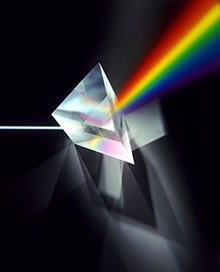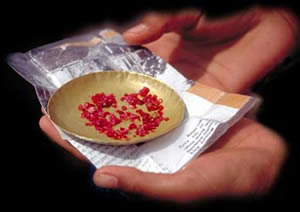|
Reviewed By Andreas Zabczyk
Lighting and Gem Color
Color is arguably the most important feature of colored gemstones. But the color of any material is due to the nature of light itself. Daylight, or white light, is a mixture of all the different colors of light in the spectrum. When white light shines on a solid material, part of the spectrum of light is absorbed, while the remainder is reflected back to the eye. For example, a ruby looks red because the material absorbs all the other colors of white light except for red. The perceived color of any gemstone is thus dependent upon the light in which it is seen. So when buying gems there are a few tricks of the trade that can be employed to help judge the true color of a stone. The first rule of thumb is to examine a gem in natural light. Flaws can be seen more clearly and, most importantly, the true color and brilliance of the gem can be discerned. It is always a good idea to examine a gemstone in varying light. But a gemstone should always be seen in natural light first. However, not all natural light is the same. In general, skylight - as opposed to direct sunlight - is preferable because it produces less glare. Geographical latitude can also affect the color of a gemstone, since skylight is usually stronger in the tropics than at higher latitudes. So a stone purchased in Thailand may appear slightly, yet noticeably, lighter once transported to a temperate country. The intensity of skylight also changes throughout the day. Stones with reddish hues, such as rubies, look best during the middle of the day while sapphires and other gems with bluish tones are enhanced by the light in the early morning or late afternoon. Heavily-polluted or overcast skies also make the skylight more grayish than blue, which may improve the appearance of red gems whilst detracting from blue ones. To avoid disappointment, purchases should be made at a time when the stone is not in its ideal light. 
Ruby on a Brass Background
Another factor that may affect the appearance of color is the color of the background on which the gem is displayed. In Thailand and Burma, rubies are traditionally offered for inspection on brass plates or yellow table tops. Using yellow as the background color offsets the bluish tint that is often noticeable in ruby and makes the gemstones appear redder. Sometimes gemstone parcel paper is lined with yellow cellophane, or brass tweezers are used for the same reason. A plain white background is usually best for judging color. This Page in Other Languages
|
| STAY IN TOUCH | NEWSLETTER |
| *You're signing up to receive GemSelect promotional email. |
Copyright © 2005-2024 GemSelect.com all rights reserved.
Reproduction (text or graphics) without the express written consent of GemSelect.com (SETT Company Ltd.) is strictly prohibited.
527